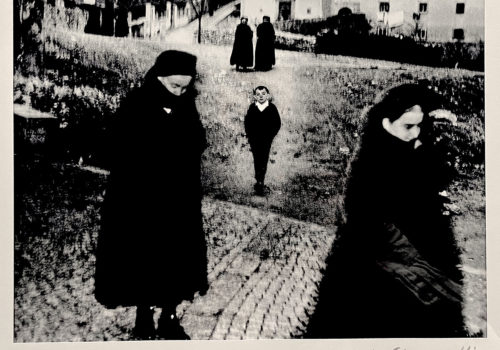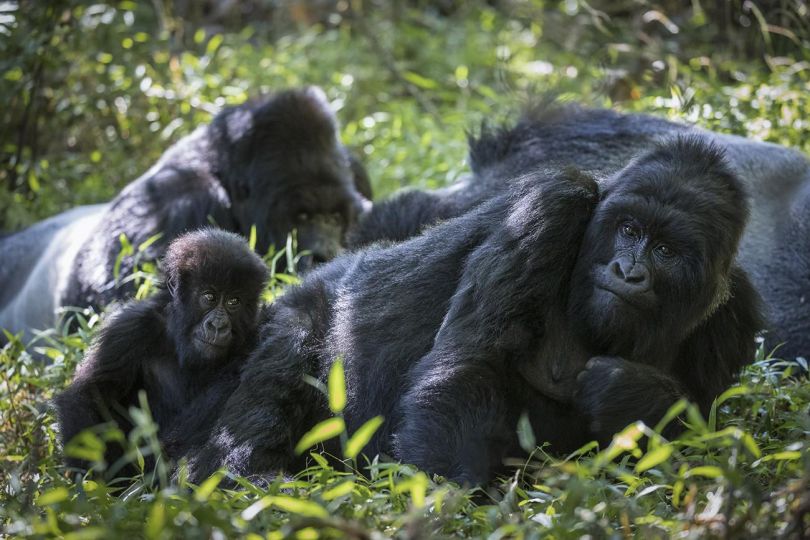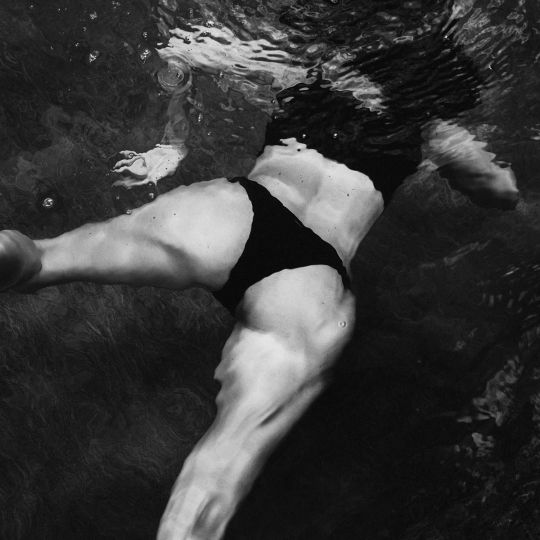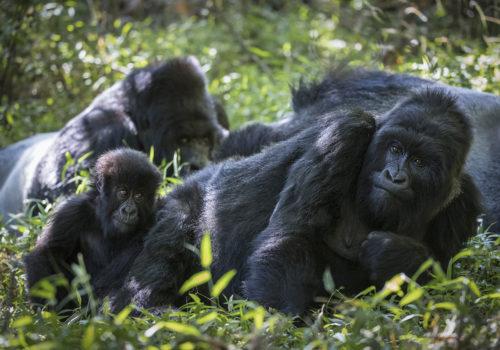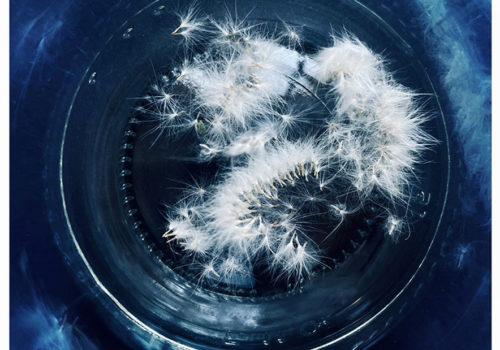The poetic reality of Giacomelli by Enzo Carli
Mario Giacomelli, unanimously considered by critics and the public as one of the greatest photographers of our time, and who passed away after a long illness on November 25, 2000, looked through his work at the infinite landscapes of the soul . Born in Senigallia on August 1, 1925, his activity as a photographer began on Christmas Eve 1952 when he bought himself a Comet camera and went to the beach to photograph the sea. To reproduce its movement and animation, he moved the camera: his first photograph, L’approdo [The approach, the boarding] was born; with it, he consciously moved away from the photographic tradition. His participation in the group of photographers from Senigallia “Misa”, founded by Giuseppe Cavalli (with Paolo Monti among the theoreticians of the “new Italian photography”) enabled Giacomelli to leave the framework of his small provincial town to integrate himself into a wider cultural universe, closer to his motivations and aspirations. However, the most important works of the great master are indissolubly linked to his land: “While feeling realistic [Giacomelli told me], I discovered that poetry is the language with which I believe I can escape the clichés of everyday reality. Space is no longer trivialized; the things that I always saw similar, the same streets, the same people in my city, thinking of their poetry, now seem modified to me. Everything has a taste of adventure that leads me into new experiences and makes me live in imaginary territories. ” In 1955, he won the first prize for the best series at the second National Exhibition of Photographs in Castelfranco Veneto. Paolo Monti, who chaired the jury, said that Giacomelli was the new man of Italian photography. In 1957 he was published in the prestigious Photography Year Book (London) and in 1958 in U. S. Camera (New York). In 1959, in the magazine Fotografia, the late critic Giuseppe Turroni already spoke of the first and second manner of Giacomelli and, on the occasion of the exhibition at the Biblioteca Comunale in Milan in 1959, he wrote about the photographer of Senigallia that he was “one of a kind” of Italian photography. It was in 1963, thanks to John Szarkowsky, then curator of the Photography Department at the Museum of Modern Art (MoMA) in New York, that Giacomelli arrived on the international scene with the Scanno series (1957), first with a publication in Looking at Photographs, then with a permanent exhibition in the collections of the Museum of Modern Art. After a series of first titled photographs between 1953 and 1956, probably influenced by his friend Luigi Crocenzi – one of the founders in 1954 of the Centro per la Cultura della Fotografia (CCF) in Fermo and one of the theoreticians and promoters of photographic narrative –, Giacomelli addressed the major themes, keeping the titles for the series of photographs. The series (produced with a Bessamatic and a 10.5 color Eliar lens with flash light) on Life in the hospice dates from 1954-1956. Mario Giacomelli knew the life of the hospice since, very young, he had followed his mother who worked there out of necessity after her widowhood. Over the meetings with the old people of the Senigallia hospice, the story of infinite love was woven. This is why he returned there in 1966-1968 for a series of works whose title is taken from a poem by Pavese, Verrà la morte e avrà i tuoi occhi [Death will come and it will have your eyes]. He brought his images to the limit of abstraction: the flesh is “scorched” by the flash light and the wrinkles of the faces are those of the earth. These blurred images are imbued with a deep lyricism reminiscent of Licini. He returned again to the Senigallia hospice for an untitled series in 1981-1983. For nine years, therefore, Giacomelli photographed the elderly, without ever producing a reportage, without ever having the requirement or the intention of denouncing or expressing social contempt. At a time when photography was by definition the mirror of reality, the hospice was for Mario a place of encounter and fascination to understand his fears, to exorcise death. Especially to understand time, made “of a little before and a little after”, said Giacomelli: “It is not easy to photograph the life of the hospice… This mother who had been waiting for her son for three years and took my hand when I brought her sweets to see her happy for a moment and she said that her son was so busy that he could not come and see her. […] I went to the hospice out of inner need. In several images, I removed the material with the white; by removing the details, I destroyed reality. Deformations, blurs destroy the overflow of reality to regenerate poetry. I didn’t make beautiful pictures, I only hid in a place that others call a hospice and which, for me, was a big mirror that allowed me to look at myself. […] I felt then that my fears were not inventions but things that I was already experiencing and of which I was a prisoner. ”
From 1955 to his death, he worked on the landscape of his native land which represented a fundamental chapter in his work as an artist and an excellent key to reading his intimate convictions. “ I do not represent landscapes, but the signs and the memory of existence. ” They are notches, like the lines that man has in his hands, like the wrinkles of the old people in the hospice, like the tears of nature and humanity, dug by the traumatic passage of time. Between 1961 and 1963, he produced the series Io non ho mani che mi accarezzino il volto [There are no hands to caress my face]. In this fantastic series of “Pretini” [Priests], these photos taken at the episcopal seminary of Senigallia, Giacomelli reached the pinnacle of abstraction through the iconic transgression of suspended images and cassocks inflated like small hot-air balloons. Between 1964 and 1966, he produced the series entitled La buona terra [The good earth], an epic saga, punctuated by the passage of cycles, seasons and characterized by ancient peasant ritual. The images were developed over the course of the reportage / story, with the participation of Giacomelli who, after a period of adaptation (he photographs the life of a patriarchal family around Senigallia), binds himself with the protagonists, follows them in their work in the fields and in their moments of celebration. Once again, this is not a realistic documentary with political and social intentions, but a rereading of time, memory and peasant memory.
The Caroline Branson series, taken from Spoon River Antology by Edgar Lee Master, dates from the years 1971-1973. It is a love story rich in meaning, supported by striking signs and by naturalistic elements – as if to underline the dramatic aspect of the story –, an alternation of evocative images, with a strong emotional impact accentuated by double exposure. Here too, under the pretext of the story of Senigallia, here is the intensity of the cosmic night, of the darkness of memories, of the absence / presence of space-time.
Giacomelli’s photography is therefore the metamorphosis of his intimate convictions: a magical realism, filtered by memory and steeped in poetry. His images – self-analysis and mirror of existence – draw their inspiration from his journeys to his inner spaces and imaginary territories. He transposes into photography his passion for his native land, for the cycles and eras of existence. Inscribed in filigree in his memory, these almost invisible relationships with his mental universe allowed him to bring to life, in the folds of matter and in an imaginary reality, the joy of creation and knowledge. Giacomelli tackled serious and disturbing themes with photography, and he loaded them with poetry, restoring them to their original dignity, without ideological dogma or academic turn. It is far from the pretensions fairly widespread among contemporary artists; he knew that each research must find the authenticity of life, know the links between forms of expression to rehabilitate our origins. He lamented the helplessness of man in the face of deformity and evil; his photographic writing expresses these feelings. With his images accentuated by luminous contrasts, by blurs, by the amplification of the grain, he wanted to overcome the anguish of pain and loneliness and to send us a message of hope. “ […] What interests me is the joy I felt when I push the trigger, the tension I felt when faced with the image. So, from that moment [says Giacomelli], the image no longer dies, it remains after my death… I would like to escape this reality and enter into the useless reality of poetry. ”
“Avanti! Si accendano i lumi / nelle sale della mia reggia! / Signori! Ha principio la vendita / delle mie idee. ” [Come in ! Let the lights be turned on / in the halls of my palace! / Gentlemen! The sale of my ideas begins.] Thus begins the poetry of Corazzini Bando [Avis de vente], from which Giacomelli drew inspiration for one of his last works which borrows its title from it. Thus he decided to conclude his own “research” by getting rid of his artistic and intellectual baggage; by turning the very concept of poetry upside down, by refuting the idea of purity and intimacy as an end in itself with which it had always been satisfied. He shows us, on the other hand, how he designed his research with more distance: exactly as at an auction, when personal ideas become those of the buyer; it then seems clear that the interpretations that we want to attribute to them are only our own. At the root of this reasoning is the realization that life is changeable: not material things, but the very nature of ideas that warp, coalesce and amplify, continually losing and gaining meaning.
It is indeed in his last work, Interrogando l’anima [Interrogating the soul], that Giacomelli reconsiders his journey inside and outside poetry, providing us with other keys to his reading. of his work. He did nothing other than regroup his previous works (also mixing them with others), providing each group of series with a new title, and therefore new points of reflection sometimes totally different from the previous foundations. Let us take an example: the images of “Pretini”, which bore as their title the very beautiful verse of a poem by Father David Turold, Io non ho mani che mi accarezzino il volto [There are no hands for caressing my face], take on a totally different meaning in this latest collection – which is nothing more than a summary of his larger work –, with a title that has become for the occasion La spensieratezza [Recklessness] . The differences between the two titles shed new light on the same photographic narrative: initially, the title taken from the poem expressed a certain melancholy because it evoked in the context of these images where the priests play together, amused and carefree – the wearing of the cassock and, from there, the total solitude of the body deprived of all physical contact. The new title is no longer a reference to their existential loneliness, but a simple reminder of the emotion (that of carelessness, therefore) that invades them at such times, and that the images invariably comment on.
In this game of mirrors that is his work, Giacomelli in turn plays with the artist’s costume and becomes his own “barker”, who proclaims in a loud voice that “the sale of his ideas has begun”. Indeed, if we return to Bando [Avis de vente], we can observe that his imagination is filled with signs – signs of passing and recycling time, just like the poet’s attempts to free himself from his verses to create new ones, or like those of the seller wanting to get rid of his obsolete merchandise to replace it. This symbolism tries in turn (game of mirrors) to free itself from the commonly accepted rhetoric that puts poetry above all things, because poetry does not represent life, but transfigures it and unfolds it in time. We are thinking of the smashed windows, the gutted armchairs, the rotten wood and the bare cement frames that make up certain shots in the Bando themed series, this micro-universe made up of interior lines, shots which, beyond their hermeticism, express the disintegration of matter under the action of time and appeal to the imagination. We are now thinking of the puppets, the mask, the crows (a reference to the dark poem The Raven, by Edgar Allan Poe), the dogs, the elongated shadows, the cuttings in the tree, the old people in the hospice, the journey to Lourdes, to the sea and the land, to all these vast and complex themes that make up the final account of the artist and his contribution to the world in the series Interrogando l’anima. We then understand that the photographic image can become a story that speaks to us more or less directly of the inner journey of a man.
Mario Giacomelli participated with great tenacity and rigor in the development of the Manifesto of the Photographers of the Center Etudes Marches, later called Manifesto of the Photographers passing of the Border (Senigallia, 1995). The Manifesto, coordinated by Enzo Carli, saw the participation of photographers from the different waves, including Gianni Berengo Gardin, Ferruccio Ferroni, Giorgio Cutini, Luigi Erba beyond Mario Giacomelli.
The Manifesto, national prize Ville de Fabriano 2013, is linked to the Manifesto of the Compass (1947) by highlighting the process of innovation in contemporary photography. The artistic program insisted on the fundamental expressive solicitations of the photographer linked to the emotional experience, to the intense tensions during the personal journey on the life of knowledge and the search for originality.
“The passage designates the action of going beyond, the change of state. The border, different from the limit, is like the veil through which the unknown opens to the grasp of man” Galliano Crinella, Passage de Frontière 1995-2004, Ed. QuattroVenti, Urbino 2013).
The Manifesto, origin of an interesting path of exploration supported by a theoretical structure, included as modus operandi a range of inspections (Verifiche) with a double interpretation, individual and collective between language, space, time, feeling and beauty, color and form.
I sincerely hope that Mario Giacomelli will now and forever be in the “useless reality of poetry”, this place that he never stopped looking for and from which he returned each time with images that served to tell him. For which we thank this great Master.
Enzo Carli
Giacomelli e l’universo by Michele Smargiassi
On the fringes of a country gripped by a consumer fever, this man still had the courage to point out a malaise that the Fiat 600 and the washing machine claimed to hide. His gaze removed the veneer of optimistic images of an affluent society. On the fringes (but not outside) of the economic boom that was moving millions of people from the South to the North of Italy, he observed the frenzy of change against the background of an immutable destiny, that of the human condition.
Whoever met him would not have called him a tormented man. A crown of white hair surmounted a good-natured face, always on the verge of a smile. Photographing gave him “the happiness of an orgasm”, he said: “When I go to take photos, I am as happy as a little girl waiting for her prince with her white horse and her blue cape…”.
But he never knew how to translate this demi-god exaltation of images into golden images. He confessed to Pietro Donzelli, a great photographer friend, that lyricism in photos was not for him, that in photographing he rather felt “the tragedy of the world”.
And this is perhaps where the glorious mystery of Giacomelli lies, in the virtuous contradiction between a gentle existence and a dramatic vision of existence. Photography was for him nothing more than an effective means. Neither a vocation nor a virtue. “I am not a photographer, I am a man who, from time to time, finds something”.
Things or ideas that he could see but perhaps not decipher: the film worked “like a blotting paper placed on a stain”, it had to be picked up, fixed, put aside. Look at a blotting paper: it is covered with stains, so many messy signs. But then the earth, the whole earth, was for Giacomelli a deposit of disorderly signs, written in a language that cannot be translated into words. It was then a question of collecting them, these signs, to make them “breathe”.
Photography “is nothing more than a sheet of paper with signs on it, signs like ideas, everything is a view of the mind”.
Michele Smargiassi, Giacomelli e l’universo (Blog by Repubblica, translated from Italian)
Mario Giacomelli
March 10-24, 2022
Hôtel Parister
9 Rue Saulnier
75009 Paris, France
https://www.hotelparister.com/

